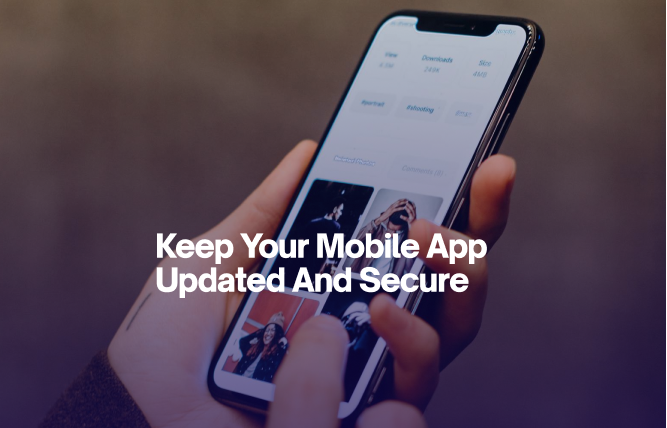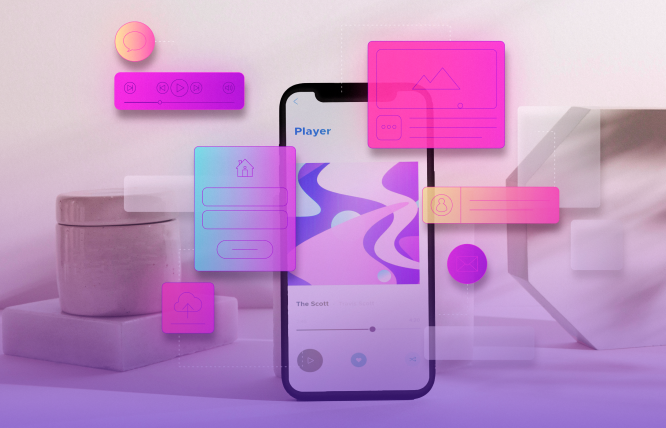This blog is a step-by-step guide for anyone who wants to build an app like Uber, covering everything from goal setting, planning, essential features, team hiring, design, development, and launch tips.
Apps like Uber can be described as apps that let you book an on-demand ride. There are tons of apps available, so you may take ideas from popular apps and build an app like Uber.
However, developing an app is not child’s play; that’s why you will need a team of dedicated developers who can visualise your idea and build a super app like Uber!
It might seem challenging, but with the right guidance, you can do it. This guide will walk you through the process, from planning to launch. By the end of this easy guide, you’ll have a clear roadmap to build your own Uber-like app.
Why Uber’s Model is Popular
Uber’s model took off because it addresses a real need: convenient and reliable transportation, delivery, and ride-sharing. It went viral when people realised that they wanted quick rides without the hassle of traditional taxis.
Uber’s app makes this simple with easy booking, cashless payments, and real-time tracking.
The Rise of Apps Like Uber
Apps like Uber have changed the way we think about transportation. You can book a ride by simply tapping on your phone instead of searching for a taxi or waiting for a bus. This shift has led to a surge in popularity for ride-sharing apps.
Current Statistics on Ride-Sharing
Ride-sharing applications are thriving, thanks to the ease and convenience these apps offer. Recent data suggests that the ride-sharing market is projected to reach $218 billion worldwide by 2025. Millions of users depend on these applications every day, indicating a strong demand and potential for growth.
The Market Demand for Ride-Sharing Apps
The market for ride-sharing apps is thriving, driven by several key factors. Urbanisation is on the rise, with more people moving to cities where traditional transportation options can be unreliable. Smartphones are now ubiquitous, making it easier for users to access ride-sharing services at any time. Additionally, the cost-effectiveness and convenience of these apps attract users who want to avoid the expenses and hassles of owning a car.
For instance, the global ride-sharing market is projected to hit $218 billion by 2025, showing a significant upward trend. The growth feels unreal, but what if I tell you that the number is going to increase even more in future? Yes, that’s true! More people are recognising the benefits of ride-sharing, leading to a steady rise in the number of users and frequency of use.
Businesses see the potential in this market and are keen to capitalise on it. Whether it is through launching new apps or improving existing ones, there’s a clear opportunity for growth. The demand is not just a trend but a fundamental shift in how people approach transportation.
Types of Apps Like Uber
When thinking about building an app like Uber, it’s essential to understand the different types of ride-sharing apps that exist. Here are some of the main categories:
Traditional Ride-Sharing Apps
These are the standard apps like Uber and Lyft. They connect passengers with drivers in real-time, offering various ride options from budget to premium.
Carpooling Apps
Carpooling applications are designed to link individuals who are heading in the same direction so they can ride together and divide expenses. This method is cost-effective and eco-friendly.
Luxury Ride Services
These apps cater to users seeking high-end transportation. They offer luxury cars and professional drivers, providing a premium experience at a higher price point.
Bike and Scooter Sharing
In urban areas, bike and scooter-sharing apps are becoming popular. These apps let users rent bikes or scooters for short trips, offering a quick and eco-friendly way to navigate the city.
Niche Ride-Sharing Services
Some apps target specific needs, such as ride-sharing for women only or apps that focus on safe rides for kids and teenagers. These niche services cater to particular market segments, offering tailored solutions.
These are just a few types of apps like Uber; if you wish to build an app like Uber, then taking tips from these concepts is a must.
Some Popular Apps like Uber
Lyft
Lyft is a popular ride-sharing app known for its friendly and community-oriented approach. It offers services similar to Uber’s, including ride-sharing, bike-sharing, and scooter rental.
Ola Cabs
Ola Cabs is a dominant ride-sharing platform in India, providing a wide range of services, from budget-friendly rides to luxury options.
Grab
Grab is a prominent ride-sharing app in Southeast Asia that also provides digital payment and food delivery services.
Cabify
Cabify is a Spanish-based ride-sharing platform with a significant market share in Latin America.
Gett
Gett offers ride-sharing services for both individual and corporate clients, with a focus on efficiency and reliability.
Careem
Careem is a ride-sharing app based in the Middle East, North Africa, and South Asia. It offers services like Uber, including car rides and bike rides.
Gojek
Gojek is a versatile app in Southeast Asia that provides ride-sharing, food delivery, and various other on-demand services.
InDriver
InDriver offers a unique approach to ride-sharing by letting passengers and drivers negotiate the price of the ride.
Comprehending these categories and apps like Uber will give you ideas and help you build an app like Uber having distinctive features. If you are looking to develop a conventional ride-sharing platform or a specialised service, there is a great chance to cater to the various requirements of customers and plan things accordingly.
How to Build an App Like Uber: A Step-by-Step Guide
Step 1: Define Your Goals
Before you start building the app, you need clear goals. Think about what you want your app to achieve. Are you aiming to serve a specific niche or compete directly with Uber? Clear goals will keep you focused and guide your decisions throughout the process.
Set Clear Goals and Objectives
Break your goals into specific, actionable steps. For example, you might want to launch a beta version in six months or gain 1,000 active users within the first year. You set milestones to plan better, track progress, and stay on course.
Step 2: Plan Your App
Define Your Target Audience
- Who would be your ideal audience?
- Are they busy professionals always on the go?
- Are students looking for a cheap ride? Or maybe families need reliable transportation?
Pinpoint your target audience as it guides your entire app development journey. In most cases, you will need a flutter mobile app development.
Understand your users
- What are their pain points when it comes to transportation?
- What do they value in a ride-sharing app?
The more you know about your target audience, the better equipped you’ll be to build an app that truly resonates with them.
Research Your Competitors
You’re not alone in the ride-sharing game. There are likely other players in your target market. So, it’s time to do some detective work.
- What are your competitors doing?
- What features do they offer?
- How do they price their rides?
- What marketing strategies are they using?
You can discover market gaps and uncover ways to set your app apart by analysing your competitors.
Remember, this isn’t about copying your competitors. It’s about learning from them and finding your unique selling point.
Step 3: Consider What Features to Include
When building an app like Uber, you need to consider the features that will make it work well.
Here’s what you should include:
User Registration and Profiles
Make it easy for users to sign up. Allow registration via phone number. This helps avoid fake accounts. Also, ask for their email address. It’s useful for sending them updates and promotions.
Booking and Scheduling Rides
The process of booking a ride should be simple. The app should pick up the current location of the user and allow manually entering a location for pickup and drop-off. The app should also offer schedulung rides for later.
Real-Time GPS Tracking
Real-time GPS tracking lets users know The current location of the ride and the ETA for arrival. This keeps them informed and fosters transparency in terms of ETAs.
Online Payment Integration
Provide various payment options for users, such as credit cards, digital wallets, and cash because you don’t want users to leave just by not having their preferred payment method.
Ratings and Reviews
Allow users to rate their drivers and leave reviews. This feedback helps improve the service and lets users share their experiences.
Customer Support
Make customer support easily accessible. Offer support through chat, email, or an FAQ section. You can also use popular messaging tools like WhatsApp or Facebook Messenger.
Trip Cancellation
Users should be able to cancel their rides if needed. Make sure this option is easy to find so users can change or cancel their booking without trouble.
Push Notifications
Send push notifications to keep users updated. Let them know when their driver is arriving or if there are any changes to their ride.
Navigation for Drivers and Passengers
Include navigation features so drivers can find the best routes and passengers can track their rides. This helps everyone get where they need to be more easily.
Profile Settings
Allow users to change their phone number, email, and password. They should also be able to adjust their notification settings.
Step 4: Hire a Development Team
Building an app like Uber is not going to be easy. You need a top-notch development team.
Here is how to find and work with the right people:
Finding the Right Team
Begin by hiring a team with expertise in building an app like uber. Make sure you have analysed their projects and request recommendations. A solid portfolio and positive reviews can provide valuable insights into their skills and abilities.
Choosing the Right Roles
Your team should include:
App Developers: These folks are your code wizards. They handle the technical stuff, and you will need both iOS and Android experts or a team skilled in cross-platform tools like React Native or Flutter.
UI/UX Designers: They are all about making your app look great and work smoothly. Good design isn’t just about aesthetics; it is about creating a user-friendly experience.
Project Managers: They keep everything on track, making sure deadlines are met and communication flows smoothly.
Quality Assurance Testers: These are your bug hunters. They test your app to find and fix issues before it goes live.
Working with the Team
Be clear about your vision and needs from the start. Regular check-ins help keep the project on track. Listen to their feedback – they have done this before and might have some valuable insights.
Step 5: Design and Develop the App
Now that you have your team, it is time to get into the nitty-gritty of design and development.
Here is how to make it all come together:
Designing the App
User-Friendly Design: Your application should have user-friendly navigation. Think about how users will interact with it and make sure all elements are clear and user-friendly.
Importance of UX/UI: Great design is not just about looking good. It is about making sure users have a smooth experience. You can try different designs and check what works best for your audience.
Prototyping and User Testing: Create prototypes to get a feel for your app’s design. Let real users test it and give feedback. This helps you iron out any kinks before full development.
Developing the App
Backend Development: This is the behind-the-scenes part of your app where all the data processing happens. Choose a reliable backend system to keep things running smoothly.
Frontend Development: This is what users see and interact with. Make sure it’s responsive and works well on different devices.
Choosing Technology: Pick the right tools and technologies for your app. This includes programming languages and frameworks that fit your project’s needs.
Testing: Test thoroughly. You want to catch and fix any issues before your app goes live. This includes checking functionality, performance, and security.
Step 6: Launching Your App
Since you have built an app like Uber, you are almost there! It is time to launch it. Here is how to make sure it’s a success:
Preparing for Launch
App Store Optimisation: Optimise your app’s listing for the app stores. Write a catchy description, choose the right keywords, and add eye-catching screenshots.
Marketing and Promotion: Spread the word! Use emails, ads, and social media to promote your app. Getting influencers or bloggers involved can also help boost visibility.
Gathering User Feedback: After launch, pay attention to user feedback. It’s a goldmine for insights into what’s working and what needs improvement.
Post-Launch Activities
Continuous Improvement: Use feedback to make regular updates and fix any issues. Keep adding new features and refining the user experience.
Monitoring Performance: Track how your app is performing using analytics tools to understand how users are interacting with it and guides your next steps.
Launching an app like Uber is a big project, but with the right team and approach, you can make it a success. Keep focusing on your users’ needs and stay flexible to adapt and improve.
Conclusion
Creating a mobile application like Uber is a significant challenge. It needs careful strategising, an expert development team, and an in-depth understanding of what your target audience might need and like.
Despite the challenge, the potential rewards are immense. Follow the recommendations provided in this blog, and going through each step will guide you in building an app like Uber.
Frequently Asked Questions
There are several apps like Uber, but none have reached Uber’s global dominance yet.
The price of developing a mobile application like Uber depends on the features, complexity, and the team working on development.
Yes, you can build an Uber-like app with the right planning and development team.
By following the instructions provided in this blog you can build an app like uber. So, perform extensive market analysis and prioritise delivering an exceptional user experience.
Have questions or feedback?
Get in touch with us and we‘l get back to you and help as soon as we can!




